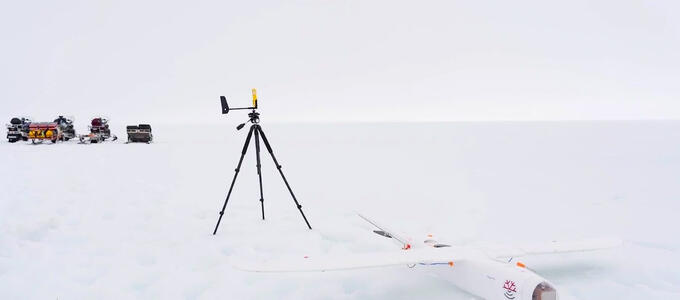
Thomas Teisberg, PhD candidate receives TomKat Center Graduate Fellowship for Translational Research
The TomKat Center for Sustainable Energy awarded three Graduate Fellowships for promising, early-stage research on novel climate solutions toward deployment in the world.
Congratulations to Thomas Teisberg, PhD candidate for being awarded the 2022 TomKat Center Graduate Fellowship.
The TomKat Center graduate fellowships give three promising researchers each year (four in 2021) the ability to focus their academic efforts on applied research to address sustainable energy and resource utilization challenges.
Thomas states, "The TomKat fellowship focuses on translational work and deploying technology. In glaciology, it's difficult to find support to scale up the infrastructure and observational systems we need to better understand these complex systems.”
The TomKat Fellowship competition is open to Stanford doctoral students performing translational research for sustainable energy or other sustainability challenges. These fellowships are meant to support advanced doctoral students (third year and beyond) to pursue innovative research projects beyond the proof-of-concept stage toward impactful applications.

Temporal ice shelf monitoring: Reducing uncertainty in sea level rise predictions with drones
Through a collaboration with the University of Reykjavík, the University of Bergen, and the University Centre in Svalbard, Teisberg will develop radar instruments and algorithms for drones to collect data in harsh Antarctic environments. The technology will open new opportunities for frequent and real-time data collection, enabling high-resolution ice shelf maps and monitoring of future sea level rise. With more accurate data and predictions, policymakers can formulate appropriate solutions to mitigate the impacts of rising sea levels on vulnerable communities.
Excerpted from "New TomKat graduate fellows work on solid-state batteries, seawater electrolysis, Antarctic ice monitoring," TomKat Center for Sustainable Energy.